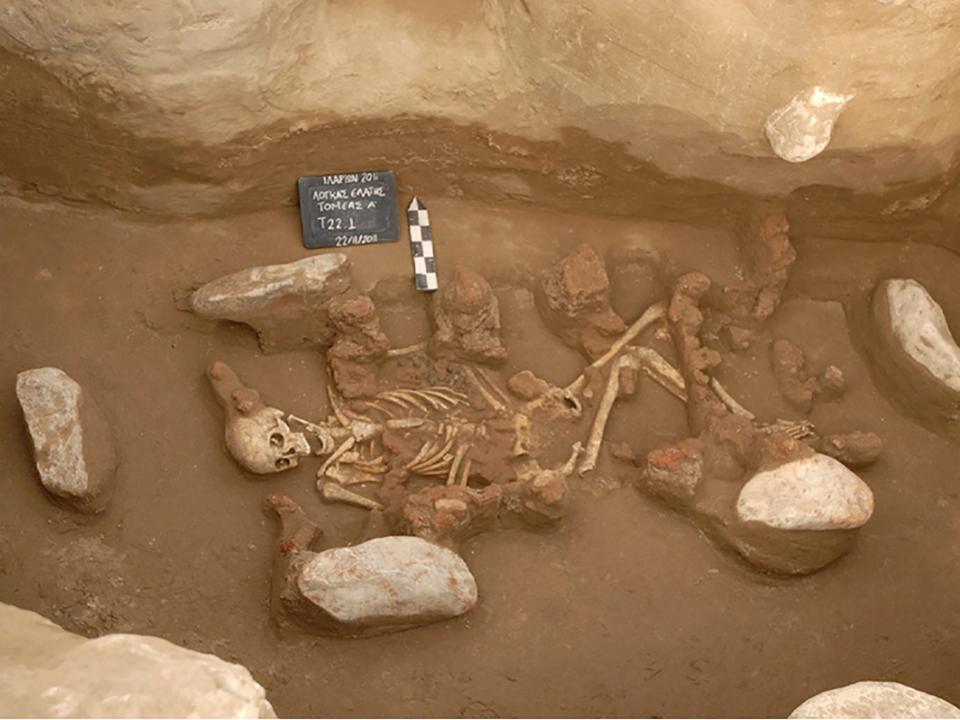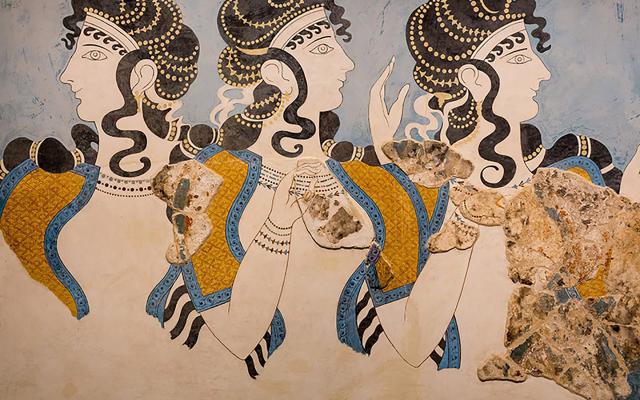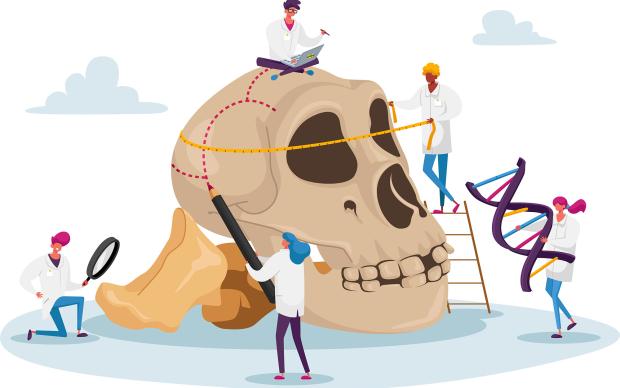Based on the analysis of ancient DNA, a study co-directed by SIB Group Leader Anna-Sapfo Malaspinas at the Department of Computational Biology of the University of Lausanne sheds light on the settlement of Greece during the Bronze Age. It can be found in the 29 April 2021 issue of the journal Cell.
The study of ancient or even extinct civilisations is not only the preserve of historians and archaeologists. Genetics also allows us to go back in time and is a precious aid to better understand how human beings colonised different regions of the planet and adapted to new environments.
A multidisciplinary study published on 29 April 2021 in Cell and co-directed by Anna-Sapfo Malaspinas, retraces a part of Greek history during the Bronze Age. Marked by profound societal, economic and artistic changes, this period that followed the Neolithic saw the birth of the first large urban centres, monumental palaces and the first forms of writing, among others
Unearthing 4 000 to 5 000 year-old human genes
At this time, three culturally distinct "Aegean" peoples flourished in parallel in the Aegean region: the Helladic civilisation (in mainland Greece), the Cycladic civilisation (in the islands of the Cyclades archipelago) and the Minoan civilisation (mainly in Crete). "Our aim was to understand whether the emergence of these cultures, which marks the transition from the Neolithic to the Bronze Age, is coupled with waves of human migrations that would have left traces at the genetic level," explains Anna-Sapfo Malaspinas.
The work was carried out by an international team of archaeologists, anthropologists and specialists in molecular biology, bioinformatics and population genetics from eight different countries. It was co-led by Christina Papageorgopoulou, associate professor at the Democritus University of Thrace, Greece. The scientists first studied 70 bones found at Aegean archaeological sites. For six of them, they managed to extract enough human DNA from skull bones to reconstruct, sequence and analyse complete genomes. "This is the challenge of working with ancient DNA: fossils are rare and, when they are available, the human DNA they contain is damaged, fragmented and present in very small quantities," says Anna-Sapfo Malaspinas.

Late migration from the steppes
Four of the six individuals studied lived in the Early Bronze Age (between about 2900 and 2300 BC). They are respectively from the three civilisations (Helladic, Cycladic and Minoan). The other two, from the Helladic culture, were in northern Greece centuries later (between about 2000 and 1800 BC).
The analyses show that the first four people have similar genomes and are all descended from local Neolithic Aegeans. "This suggests that the major innovations that took place during the transition from the Neolithic to the Bronze Age were not in fact the consequence of contributions from outside populations, as assumed by some scientists until then: indeed, if this were the case, they would have been reflected at the genetic level," relates Anna-Sapfo Malaspinas. This is a surprising discovery since in the rest of Europe, this period of cultural transition is associated with massive gene flows from peoples from the Pontic steppes, which extend from the northern Black Sea and the Caspian Sea to Kazakhstan.
"In Greece, this interbreeding took place a little later, without us really knowing why," continues the specialist. Indeed, the two individuals who lived in the middle of the Bronze Age have 50% of their DNA in common with the steppe populations. They also resemble the current inhabitants of the Aegean region, which suggests that these migrations from the eastern plains helped shape the genome of modern Greeks.
4000 years of genomic history remain to be deciphered
Anna-Sapfo Malaspinas, who has studied the Americas and Polynesia extensively, now wants to continue working on questions relating to the settlement of Greece. "The periods between the Bronze Age and modern Greece, representing 4000 years of history with innovations such as democracy, remain completely unknown from a genomic point of view," explains the specialist in computational and evolutionary biology.
Reference(s)
Clemente et al. The genomic history of the Aegean palatial civilizations, Cell (2021).











